POSTER TIPS
In one Erasmus session, they told us that we needed to create a poster with ten tips to improve empathy, so we decided on the ten tips we wanted to show people so that we could improve.
-Respect others; everyone has the same right as you to be happy!
-Understand people before judging them, especially if you are not able to put yourself in their shoes.
-Live your life and let others live.
-Don't waste your time judging and loving.
-Don't make people feel less important.
-Rejoice in the successes of your friends and colleagues.
-Think about how the other person feels.
-Respect yourself; it's the first step to being respected.
-Don't do what you wouldn’t want them to do to you.
Firstly, with the whole class, we chose 10 tips on how to be more empathetic, and then individually we made a poster with these 10 tips. When they were all done, together we voted for the decalogues that we thought were the most beautiful and original, and we hung the most voted one in class.
We enjoyed this activity and would love to do it again, as it taught us how to be more empathetic. We recommend doing this activity to more people, as we have noticed that we have learned many things. We learned to work in groups when we decided the ten pieces of advice we chose. We have also learned to listen to others by doing polls for other high school students. That is why we recommend doing this activity to practice all these things.
EMPATHIC ACTIVITIES DURING TUTORING HOUR
INTRODUCTION
In Erasmus class, with the aim of working on empathy, we made some games and activities organized by the students. We presented them in class and carried them out together with the participation of all the students.
DESCRIPTION activities and goals
The aim of the activities was, above all, to work on empathy, but they also help to increase the team spirit and friendliness between students.
ACTIVITIES
We carried out several activities, each one designed for different groups of students.
These are the activities with a brief description:
-
Alba Fabrés, Júlia Sanchez, Carla Fernandez and Ivet Anido did an activity called "The Wool Web". The aim of the activity is to get to know each other and consists of sitting all in a circle. One student grabs a tip of the wool ball and says his or her name and a characteristic. Then, he or she passes the wool ball to another student. At the end of the activity, a net of threads is formed among all the students and represents their union.
-
Martina Vall and Claudia Vizern's group did an activity called "Card Game". The objective of the activity is to improve empathy and consists of distributing a blank card to each student. They will write a problem or insecurity and, after mixing them, the students will try to find a solution to each problem.
-
Biel Coma and Axel Ramos did an activity called "Silence of Empathy" to work the empathy. With a maximum of six players, the game consists of sitting in a circle with the "question" cards in the middle and taking and each student has to answer the questions related to empathy.
-
Biel Sempron and Martina Solé organized an activity called "The Couples" with the aim of learning about empathic situations. This consists of placing all the students around the letters and others in the middle organized in a row and upside down. Each student, in order, picks up a letter and tries to find the couple. Each couple consists of an image of a situation related to empathy and their respective partner, which is the description of the image. Who gets the most couples win.
-
The group of Marina Bigorra and Mariona Perissé did an activity called "Name Communication" with the aim to know everyone's names and not being ashamed when you need to ask something. It consists of putting ourselves in a circle (standing) and one person is located in the center. This person spins with his or her eyes closed and stops in a random person, that person crouches down and those next to him have to say their names. Whoever says it first (and well) wins, and whoever loses is eliminated. The last thing left wins the game.
-
Noela Tobias and Nuria Guix organized a game called "Empathetic Goose" to know what members of the empathy group think. With a duration of approximately thirty minutes, it is a version of the well-known goose game with the difference that in each box there is a phrase or question related to empathy. Each person, when they touch their turn, will give their opinion on the phrase of the respective box so that the rest of the group can know the different opinions of their classmates.
-
Júlia Vila and Júlia Clavero's group thought of a game called "Right or Left" with the aim of realizing whether we are empathetic or not. It consists of making a row with all the members of the class or group, one after the other, covering everyone's eyes. A person explains a situation and gives two possible answers, and empathetic and a non-empathetic one. Being the right side empathetic and the left the non-empathetic, each takes a step to the side that touches based on his answer; At the end of the activity, we can see if we are very empathetic or not.
-
Núria Vila, Jana Carrasco, and Natalia Canadell did an activity called "We know empathy" with the aim of knowing in detail the empathy. A paper is distributed to each student, each one has to write his name. These papers are mixed and distributed randomly again among everyone; each person will have to leave the middle of the roll and act as the student who has touched him while the other members of the group try to guess what name he has on the paper. In this way, we will understand that each person is different.
-
The group of Júlia Argilés and Laia Rodríguez did an activity called "Draw a colleague" with the aim of being able to get to know better each other. A sheet is distributed to each student and everyone writes their name. The manager collects them and distributes them again randomly among all the students who have to draw to the person who has touched them highlighting the characteristics that attract their attention.
-
Finally, Maria Domènech, Aina Serra, and Martina Muñoz invented an activity called "Forgiveness in Empathy". A doll is distributed to each student, thus assigning what role each one will have in the activity because each doll represents a different trade or person. In order, each student will explain a situation that has or is living where they do not receive a tie. Afterward, the rest of the students look for solutions and ways to help based on their respective characters. In this way, we learn to understand others and their problems and look for ways to help others.
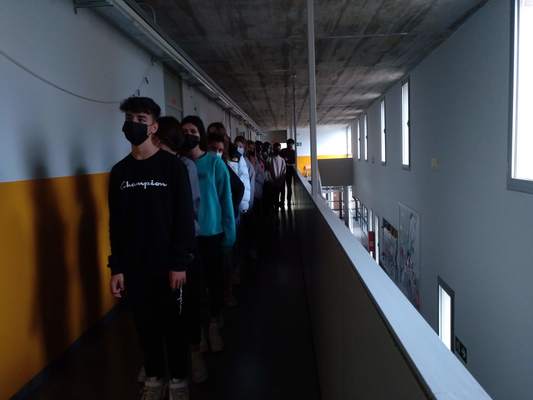
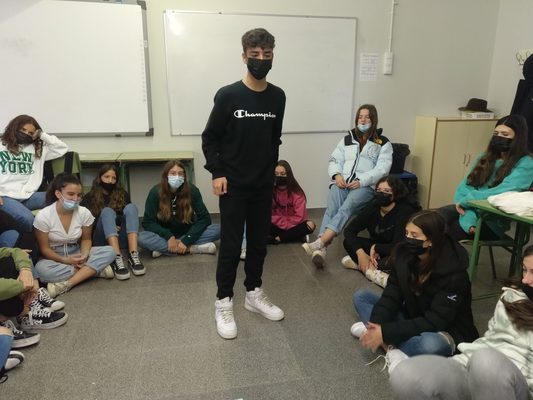
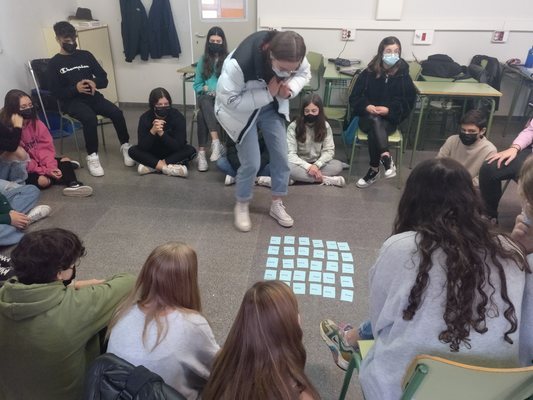
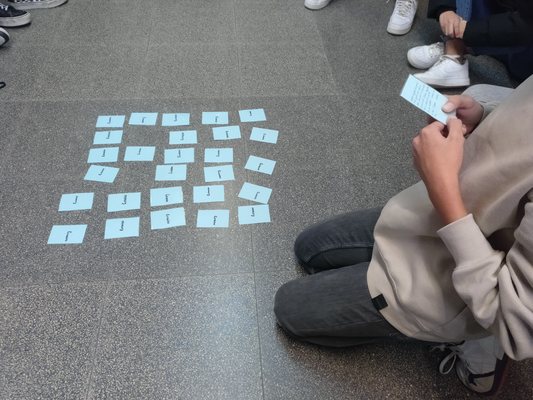
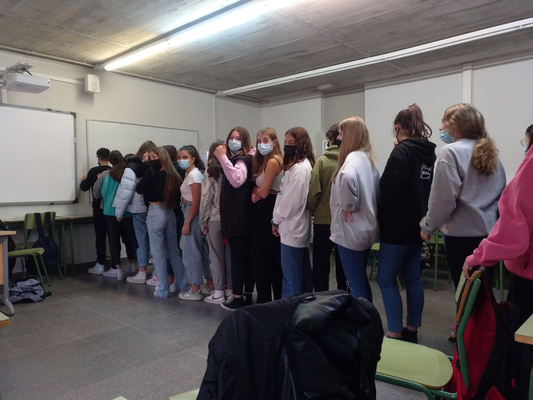 EVALUATIONS
EVALUATIONS
Empathy is one of the most important Soft Skills, as you know, we have been working on Soft Skills throughout this course, and the soft skill we worked on during the course of the second trimester was empathy. This activity has been one of those that have helped us to understand and learn how an empathetic person is. What behavior it usually has and how we will have to behave to become so. A creative activity where students learn to explore their imagination and look for ideas to be able to capture in a very simple way the main components of empathy, all through examples, activities with a base of self-knowledge, and metaphors. After doing them, all the students felt that they had had good results and we had felt good presenting them and carrying them out. It was great!
EMPATHY GRADE
INTRODUCTON:
We are Erasmus Students of 3rd Eso of the Institut Auro from Catalunya and we have worked on different kind of Soft Skills and specifically Empathy. To analyze how empathics we are, we created a survey for all 3rd ESO students.
DESCRIPTION activity objectives
We decided to suggest different questions related to the empathy to ask in the survey.
Some of these questions are:
-
Would you help someone who is lost in your village?
-
If you meet someone on the street and they ask you if you can leave your cell phone, would you leave it?
-
If you pass in front of a person and your wallet or cell phone falls off, would you return it?
This survey was opened for all 3rd ESO students by mail at tutorial hour.
ACTIVITIES PERFORMED:
The activities we did based on the results of the survey were:
-
Decalogue of empathy, that was created based on the results of the survey, which are rules, requirements, basic attitudes that must be followed to be more empathetic.
VIDEOS and PHOTOS
We made a power point about the answers to the questionnaire

we also made a decalogue of empathy to have one in each classe
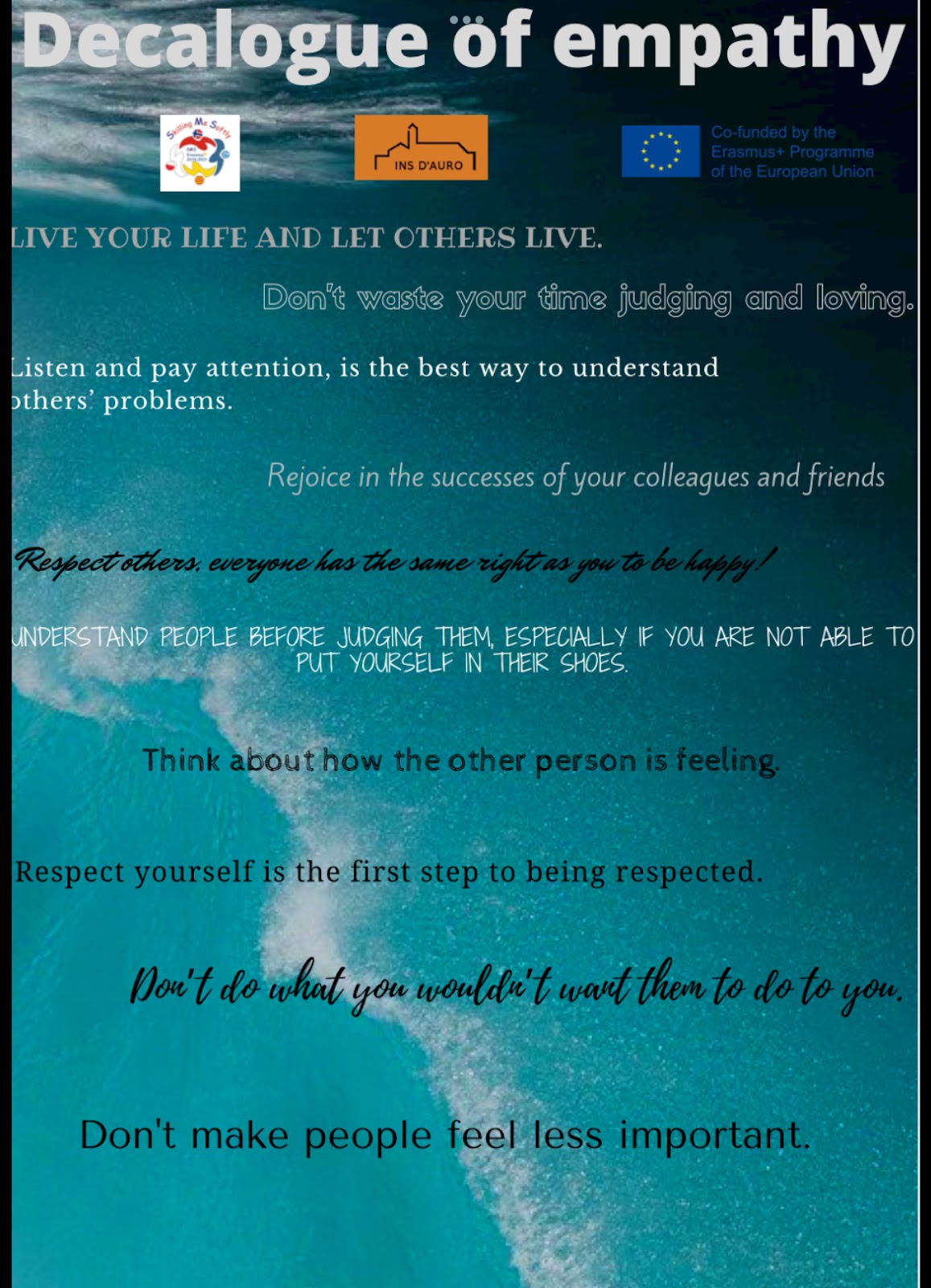
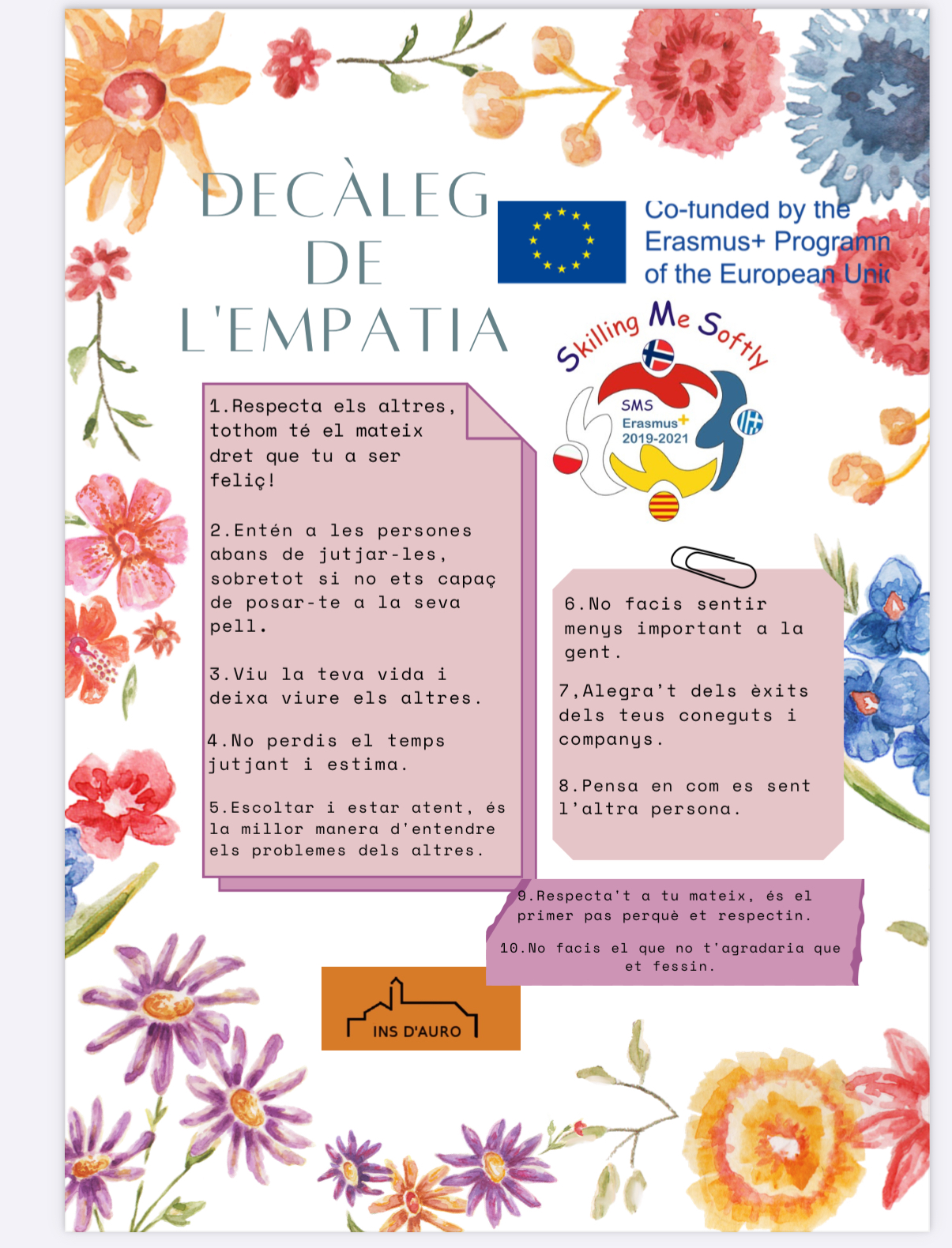
This work is focused on empathy, to understand what empathy is we saw different videos and we did some activities. Empathy is the capacity to understand the feelings or emotions that another person or animal feels. It helps us to solve problems and understand another person.
The purpose of these activities was to understand what empathy is and why it is important in our lives. Different videos and activities help us to understand this Soft Skill in a visual and oral way.
First, in pairs, we recorded a video with our classmates. In each video, we presented different situations related to empathy. We did one video in catalan and another in English, and both of them with subtitles.
We think that empathy is so important to our future, to know and understand other people it's essential for working in harmony and being more productive. Although, in front of a difficulty or a problem, we can find the solution without making the problem bigger.
https://youtu.be/WrfoN-eG1eM
Text by: Núria Guix, Carla Fernàndez, Biel Sampron, Martina Solé, Biel Coma i Núria Vila.
Traduction by: Núria Vila